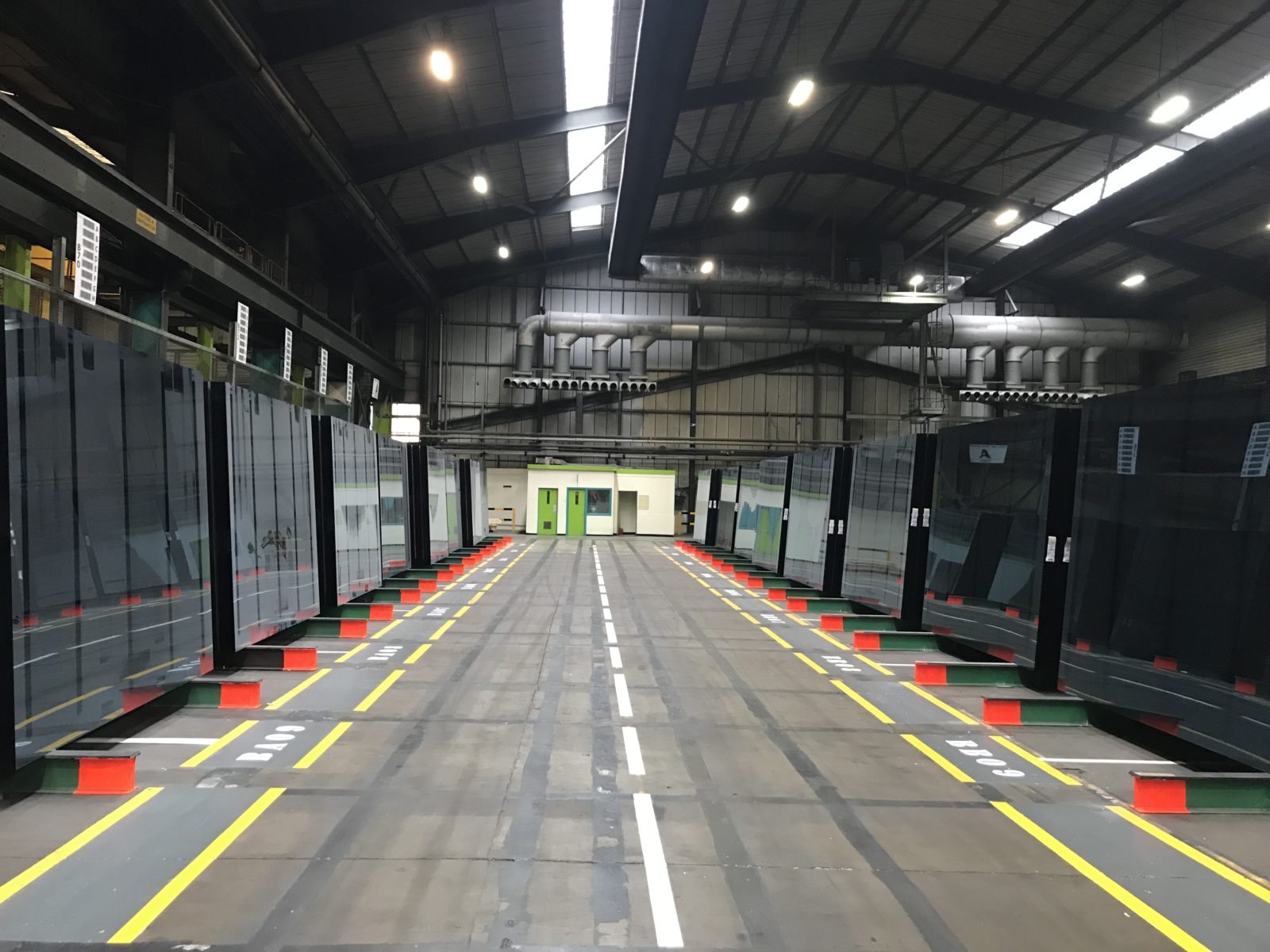Glass warehouse layout validation with a digital twin simulation

We partnered with the Simsol team to take our warehouse operation to an enhanced, data driven level. Thanks to their expertise in simulation there’s no need to risk downtime when we can now test any elements in the layout and quantify the impact from multiple perspectives. This marks a new chapter for our operations and we’re excited to see what further efficiencies can be made with the digital twin.
Mike Sharples, Operations Manager
With over 200 years experience, Pilkington United Kingdom Limited (‘Pilkington’), part of the NSG Group is well established in serving the glass market, offering a range of float, coated, rolled, laminated, fire-resistant and toughened glass products. Meeting growing demand from new sectors with evolving design and aesthetic features has meant an increase in the different specifications of product offered. The wide range of glass products makes for added complexity in the production for the glass manufacturer when managing the specific handling and storage requirements over hundreds of SKUs.
Simsol were tasked with investigating the optimal layout for the warehouse, of which the photograph above makes up less than a tenth of the total storage space. Dynamic data was needed to give the team the ability to run tests in how to best move and store different sized glass products, making the best use of the warehouse and new fleet of forklift trucks.
Specialist simulation engineers used Siemens Plant Simulation software to create ‘before’ and ‘after’ ‘digital twin’ warehouse simulations. The existing layout of the production was tested against alternatives with variations on key metrics, to generate data to ultimately identify the optimal set up. All of this was completed virtually using a 3D model, or ‘digital twin’ of the operation, meaning day to day operations were not interrupted in the testing phase and all decisions were backed up by data.
Pilkington UK were able to validate the best way to organise the warehouse for managing stock and getting the most value from the forklift trucks, they also have a powerful tool to test future ideas for continually improving the operation in an environment with no risk.